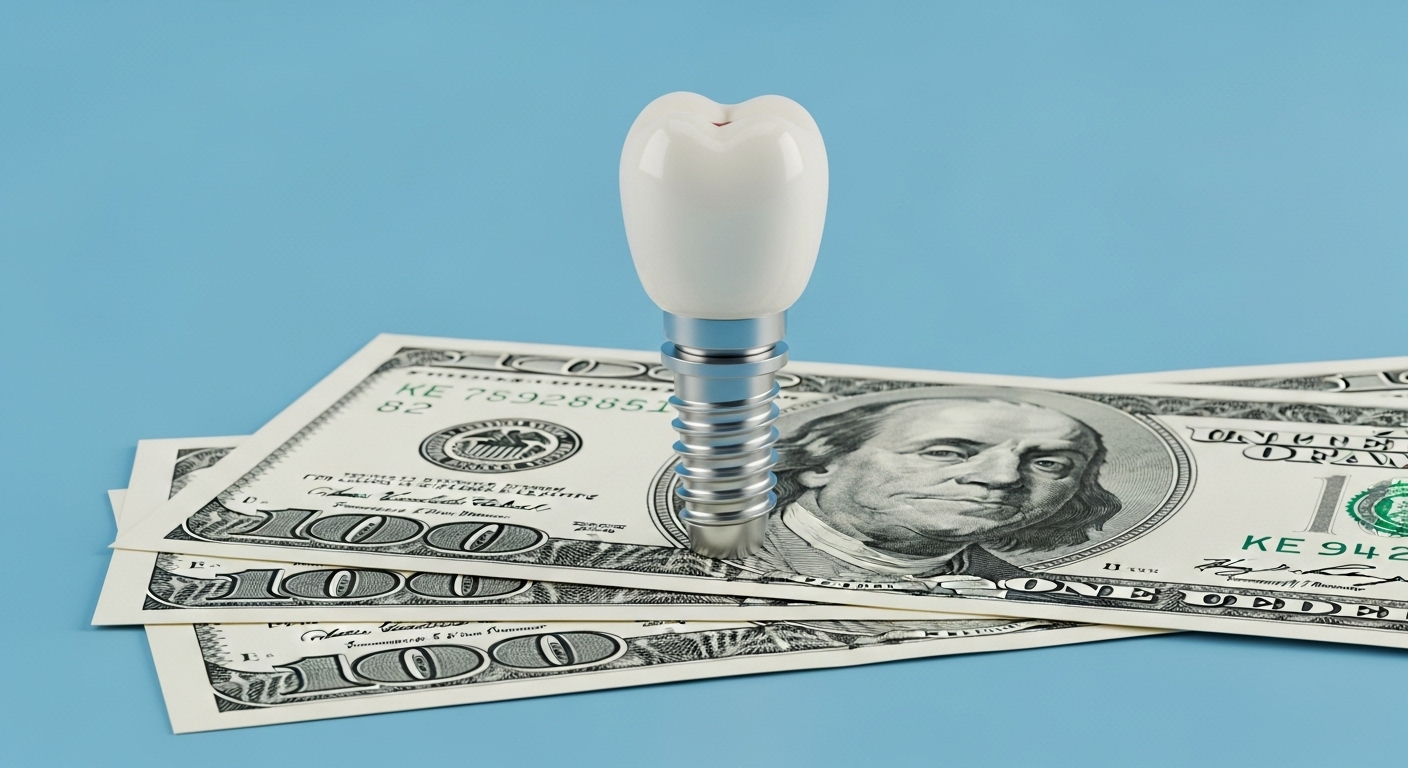Contents

Dental Implants in 2025: Your Complete Guide to Reducing Costs
Dental implants are a durable and aesthetic solution for replacing missing teeth, but their high cost can be a significant barrier. This guide presents concrete strategies to reduce these expenses without compromising the quality of care.
Understanding the Cost of a Dental Implant in 2025
A dental implant treatment consists of several components that make up the total cost:
| Component | Description | Price Range in the US (2025) |
|---|---|---|
| Implant (Titanium Post) | Surgical base inserted into the bone | $1,500 - $3,000 |
| Abutment | Connecting piece | $500 - $1,000 |
| Prosthetic Crown | Visible part (artificial tooth) | $1,000 - $2,500 |
| 3D Scan/Cone Beam CT | Pre-operative imaging | $250 - $500 |
| Bone Graft (if necessary) | Bone volume augmentation | $500 - $2,500+ |
| Average Total Cost | Standard complete single implant | $3,500 - $6,500 |
Effective Strategies to Reduce Costs
1. Methodically Compare Quotes
Comparing quotes is a fundamental step to optimize your expenses:
- Consult multiple practitioners: general dentists with implant training, periodontists, or oral and maxillofacial surgeons.
- Expand your geographic search: costs in smaller cities or rural areas are often 15-30% lower than in major metropolitan areas.
- Request a detailed treatment plan that includes:
- The type and brand of the implant (ensuring traceability).
- A precise breakdown of each procedure and material.
- Ancillary costs (X-rays, anesthesia, medications).
- Warranty conditions and post-operative follow-up care.
2. Maximize Your Dental Insurance Coverage
Understanding US Dental Insurance for Implants
Most PPO dental plans categorize implants as a "major" service. Coverage typically includes:
- Deductible: An initial amount you pay before coverage begins.
- Co-insurance: The plan pays a percentage (often 50%) of the cost, and you pay the rest.
- Annual Maximum: A limit on what the plan will pay per year (e.g., $1,500 - $2,500).
Choosing the Right Insurance Plan
| Coverage Level | Typical Implant Benefit | Crown Coverage | Average Monthly Premium |
|---|---|---|---|
| Basic | Often excluded, or limited coverage | 50% up to annual max | $30 - $50 |
| Mid-Range | 50% up to annual max | 50% up to annual max | $50 - $80 |
| Premium | 50% with higher annual max ($2,500+) | 50% - 60% up to annual max | $80 - $120+ |
Key Considerations:
- Check for annual maximums and if they apply per person.
- Be aware of waiting periods (often 6 to 12 months for major services).
- Review the number of implants covered per year.
- Use online comparison tools to find the best dental insurance for your needs.
3. Explore Alternative Solutions in the US
Dental School Clinics
University dental schools offer implant treatments at reduced rates (often 30-50% less than private practice), performed by supervised dental students or residents.
Pros:
- Substantial savings.
- Supervision by experienced academic faculty.
- Up-to-date materials and protocols.
Cons:
- Often long waiting lists (3 to 12 months).
- Appointments are typically longer.
- Limited availability.
Community Dental Clinics & FQHCs
Federally Qualified Health Centers (FQHCs) and other community clinics may offer implant services on a sliding fee scale based on income, making them more accessible.
4. Dental Tourism: An Option to Evaluate with Caution
| Country | Average Cost of a Full Implant (2025) | Potential Savings |
|---|---|---|
| Mexico | $1,500 - $2,500 | 50-70% |
| Costa Rica | $1,800 - $2,800 | 40-60% |
| Colombia | $1,600 - $2,600 | 45-65% |
Essential Recommendations:
- Verify the dentist's credentials and training (check for US or internationally recognized certifications).
- Confirm the use of reputable, well-known implant brands with warranties.
- Plan for follow-up visits (a minimum of 2-3 trips may be necessary).
- Budget for potential complications and travel costs.
- Remember that your US dental insurance will likely not cover treatment abroad.
5. Alternatives to Dental Implants
| Solution | Average Cost (2025) | Durability | Pros/Cons |
|---|---|---|---|
| Fixed Bridge | $3,000 - $6,500 (3-unit) | 10-15 years | + Less surgically invasive - Requires shaping adjacent teeth |
| Removable Partial Denture | $800 - $3,500 | 5-8 years | + Economical solution - Less comfort, more maintenance |
| Complete Denture | $1,000 - $3,000 (per arch) | 5-7 years | + More affordable for full arch - Stability and comfort can vary |
Summary: The Optimal Strategy to Minimize Your Expenses
- Consult multiple practitioners and meticulously compare detailed treatment plans.
- Choose a high-value dental insurance plan with good implant coverage at least 12 months before starting treatment.
- Consider dental schools or community clinics if you are not on a tight schedule.
- Explore dental tourism options while taking all necessary precautions.
- Phase your treatments over multiple years to maximize annual insurance benefits.
- Discuss financing options with your chosen dental office.
Conclusion
Investing in dental implants is a significant decision for your oral health and quality of life. Although the cost is substantial, the strategies presented can lead to considerable savings without sacrificing the quality of care.
Always prioritize safety and quality in your choices: an implant correctly placed by a qualified practitioner, using certified materials, can last for decades, making it a wise long-term investment in your health.
